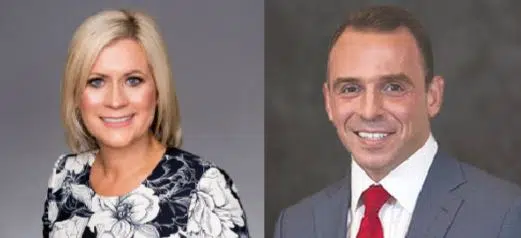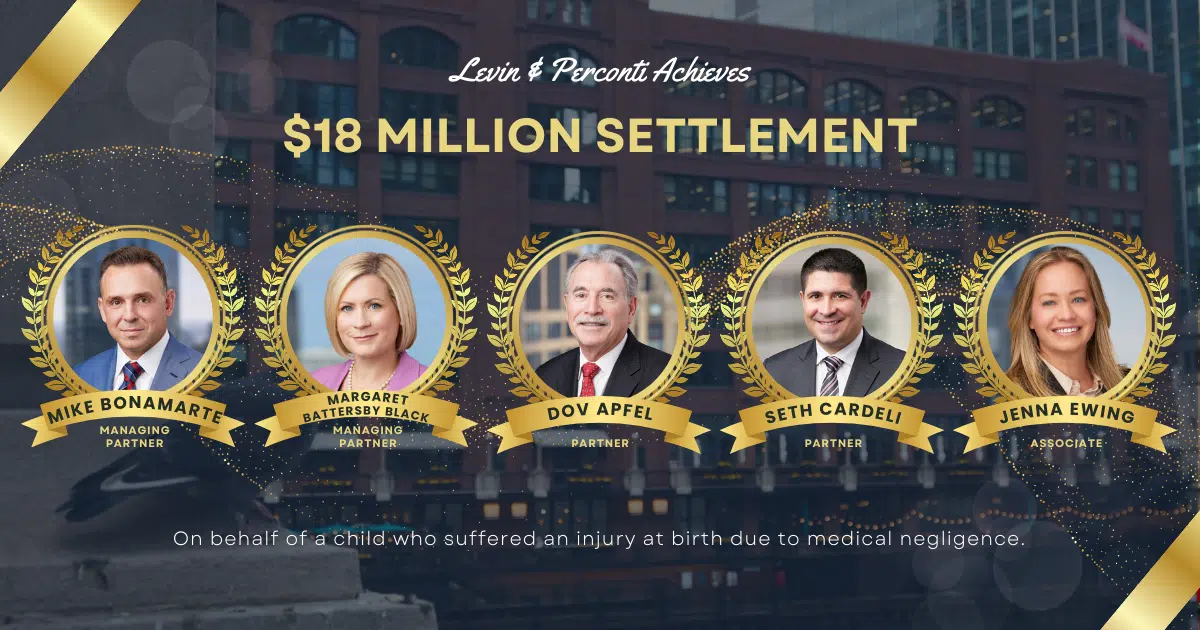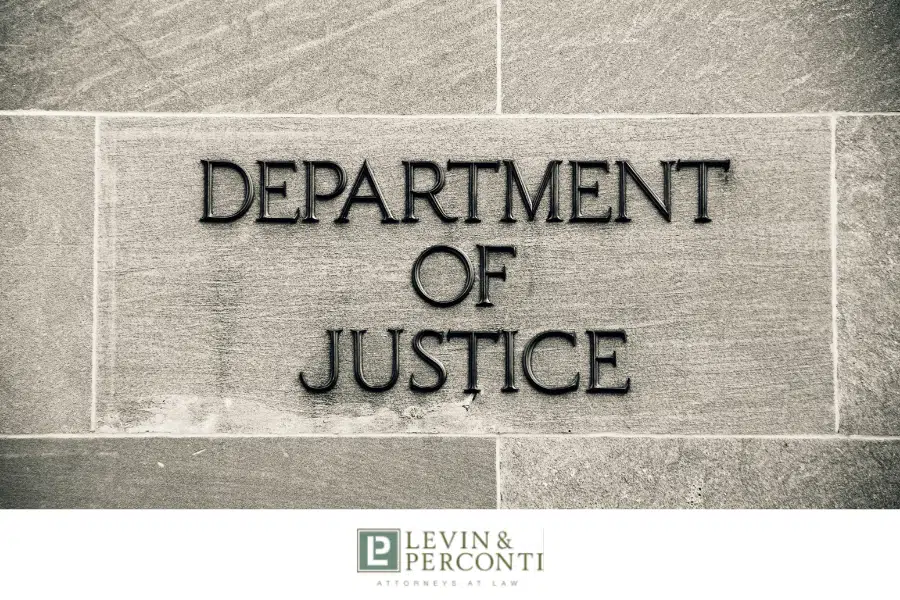Two partners talk about going from student to teacher
This piece was originally published in the Chicago Daily Law Bulletin on August 1, 2019.
By Margaret Battersby Black and Michael F. Bonamarte IV
Margaret Battersby Black and Michael F. Bonamarte IV, partners in the law firm of Levin & Perconti, concentrate on high-profile nursing home, wrongful death, medical malpractice and personal injury cases.
When we joined Levin & Perconti about 15 years ago, fresh out of law school, Steve Levin and John Perconti presented us with a very unusual opportunity: Rather than consign us to a few starter years on low-level tasks, they invited us to contribute in meaningful ways on important cases right away, mentoring us directly to hone our skills in the practice of personal-injury law.
Levin’s and Perconti’s vision for the firm they had created extended beyond their own tenure, and they wanted us to build our careers with them and eventually take on more senior positions as partners.
Today, that is exactly what has happened. And while Levin & Perconti has grown substantially, that growth has come from recruiting young lawyers in need of the same kind of training and preparation we received.
This means that before we were even 40 years old, we were responsible for managing and mentoring the associates coming up behind us, some of whom will one day lead the firm.
Navigating this transition from student to teacher has us thinking about not only what our mentors have taught us, but also how they created unusual and valuable opportunities for us to learn.
While it is impossible to capture all the ways our work has been shaped by the last decade and a half, three central lessons stand out.
This is what our mentors have taught us and what we aim to pass on:
The best kind of learning is hands-on from the start.
In most firms, young lawyers must put in years of work before they are allowed anywhere near important cases, but our mentors have always believed that with the right guidance and oversight, “green” lawyers are capable of taking on significant responsibility. In sum, the best way to get good at preparing a case for trial is by preparing a case for trial.
Right from the beginning we attended important depositions to observe the techniques and strategies Levin and Perconti used, and we saw how the outcome of the deposition shaped continued preparation of the case. Within two or three months of being sworn in, we ourselves were taking depositions.
Our trial experience followed the same pattern. We both had the opportunity to try at least one case alongside a mentor prior to first-chairing subsequent trials. And even when we took first chair in the courtroom, we still enjoyed the support of our mentors.
Over time, this empowered us to do the teaching when we worked with inexperienced associates on significant cases — and get great results, even when we were facing significantly more experienced defense counsel.
Last December we tried our first case together. Not only did we have the chance to use everything we’ve learned from our mentors, but we also worked successfully with an up-and-coming associate who took third chair as well as many new attorneys who had just passed the bar.
There is no question that the extraordinary verdict we received in that case was the result of multiple generations of mentorship within our firm.
At every stage of the process, our mentors have always welcomed our ideas, whether they were about strategy or about using technology to innovate some aspect of the work. Meanwhile, through their guidance, we came to understand the wisdom of time-tested approaches.
The work is always better off because of all these voices at the table, and we strive to extend this openness and adaptability into the next generation.
Understanding the business is as important as the practice of law.
No one practicing law today escapes the necessity of business development, but most firms do not involve younger lawyers in strategic planning for the future of the firm. At our firm, however, the senior partners made a conscious choice to train us in the business of running a law firm at the same time they were teaching us about the practice of law. This meant we were involved in marketing and communication plans as well as hiring decisions.
We also learned how to talk about our work in networking situations or any other social interaction. “Imagine how you would feel,” Levin would tell us, “if someone who needed help went to another firm and didn’t get the best possible representation, only because they didn’t know what you do for a living.”
Even as junior attorneys we understood that we were surrounded by opportunities to be of service and help grow the firm. We work to instill this entrepreneurial thinking in the firm’s associates.
Collegiality is empowering and meaningful
Our mentors have led by example when it comes to taking on substantial roles in professional organizations that shape our practice area.
In turn, they have always encouraged us to pursue opportunities to lead, whether through involvement in the Illinois Trial Lawyers Association (where Margaret Battersby Black was the inaugural chair of the Women’s Caucus and now serves on the organization’s executive committee), the American Association for Justice (where Michael F. Bonamarte IV is the new chair of the Nursing Home Litigation Group) and other professional organizations where our firm can play an important role.
As we encourage younger attorneys to envision what’s possible for their careers, we can speak from experience that this kind of service is crucial to becoming a well-rounded lawyer.
In addition to formal opportunities to collaborate with other members of the bar, we’ve also drawn great meaning from our firm’s tight-knit familial culture.
This is a place where colleagues openly discuss their work, strategizing with each other at all points of the case, from intake to closing arguments. But we also talk about more than just work. It might be that our mentors see us as their “progeny,” but we’ve also formed treasured friendships with them and have been present for each other at significant moments in our lives, such as weddings and the celebration of our children’s births.
This value, that the relationships among colleagues are about far more than merely doing business, is something we strive to pass on to the future leaders of our firm.
There is no doubt we face some hefty responsibilities for two fairly young partners. Managing and training the 20 lawyers under age 40 we work with and honoring the vision of our founding partners in this era of rapid change are complex challenges.
But we’re not worried.
The intensive mentoring we’ve received from the very beginning of our careers has prepared us for the work ahead, and we can’t wait to see what the future holds for our firm.



